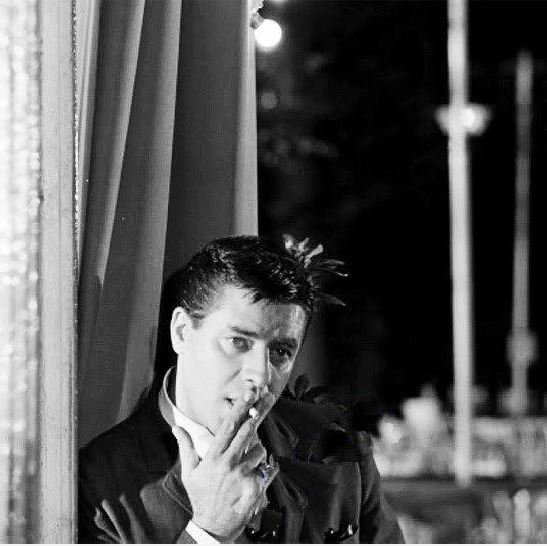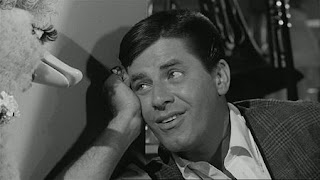Like a peanut butter and jelly sandwich laced with too many prescription drugs, Suburbicon (2017) might look, sound, and perhaps even taste a little like a Joel and Ethan Coen picture because, in a sense, it is. The Minnesota brothers penned the script for this acerbically funny 1960s suburban nightmare years ago before being picked up and brought to life by George Clooney. Matt Damon and Julianne Moore play characters who appear on the surface to be regular 1950s archetypes—the dependable breadwinner and the sweet-as-pie homemaker—before being exposed as amoral schemers when their bad decisions unravel. Everything from the Corn Flakes boxes that line the shelves of the local convenience store to the whoosh of Julianne Moore’s pristine hair feels tactile and carefully considered. Greed, sex, power, and consumerism are the driving forces of the white inhabitants of Suburbicon and these forces are enough, it would seem, to justify tearing each other apart and thinking little of it. Needless to say, parables will be drawn to our current state of affairs. Source: thefilmstage.com
“Over the past five decades, Middle America has been stagnant in terms of its economic growth,” said Mark Rank, a professor of social work at Washington University in St. Louis. In 1973, the inflation-adjusted median income of men working full time was $54,030. In 2016, it was $51,640 — roughly $2,400 lower. As in an Agatha Christie mystery, the potential culprits behind the long-term trends are many — global competition, technological advances, trade imbalances, a mismatch of skills, the tax system, housing prices, factory shutdowns, excessive regulation, Wall Street pressure, the erosion of labor unions and more. In 2011, the median income for 25-year-old men was less than $25,000 — pretty much the same as it was in 1959. The result is that, since the 1950s, three-quarters of working Americans have seen no change in lifetime income. Source: www.nytimes.com
Joan O'Brien is most remembered for her popular 1950s drive-in films where she could be counted on to look fabulous and give a pleasant performance. In It Happened at the World's Fair (1963) she plays a prim nurse romantically pursued by pilot Elvis Presley amid the excitement of the Seattle World's Fair. When The Bob Crosby Show was cancelled in 1958 due to slipping ratings, Joan was urged by her MCA agents to give acting a try. They presented her to all the major studios as a beauty who could not only sing and dance but act as well. MGM signed her to a multiple picture deal. "This was the ideal arrangement to have," says Joan. "It meant that MGM had to use me in three films within a certain period of time. But I also had loanout rights to work at any other major Hollywood studio if I so chose to."
Joan tried her hand at physical comedy opposite the wild and woolly Jerry Lewis in one of his funniest films, It's Only Money (1962) directed by Frank Tashlin. The film is full of live action cartoon elements from start to finish, and most of the supporting turns would seem perfectly at home in any given Looney Tunes feature. Lewis plays a bungling would-be detective searching for Mae Questal's long-lost nephew and heir to her fortune. Joan is delightful as Questal's nurse, who also suspects that Jerry may be the nephew and tries to help him.
Describing the experience of working with the comic genius, Joan says, "Jerry Lewis was totally off the wall and we had a lot of fun working on this film. He had me laughing so hard and so long during some scenes we had to stop and start over. He was such a practical joker and had all of us including Frank Tashlin, in stitches. But Jerry could be serious also. He was very generous and gave me a book that I still have called You're Better Than You Think. Inside he inscribed, 'And you really are, Joannie.' I was going through a period of time with a bad marriage and feeling down and depressed. Jerry really set my head straight. He said, 'Do you want to see some people who really have problems? Then come with me to visit my kids with Muscular Dystrophy who are wired up. Yours are nothing in comparison.' He also gave me some insight on how to appreciate myself a lot more as an individual."
Francine York arrived in Hollywood via beauty pageants (with the Miss San Francisco title) and modeling after an unsuccessful stint as a secretary for Northwest Airlines. Her first feature film role was a conniving magazine editor who pays a sleazy ex-detective (Robert Clarke) to set up show business people in compromising situations to help sell her scandal sheet (a la Confidential Magazine) in Secret File: Hollywood (1962). Casting director Eddie Morse took note of York and thought she would be a perfect foil for Jerry Lewis. Francine was late to her appointment to meet Lewis because she lost her wristwatch. She was pleasantly surprised by Jerry's reaction. "I told Jerry that I lost the watch and that it was a graduation present," recalls Francine.
"He said, 'Just a minute!' He called his secretary and told her to order me a new watch to be delivered to my home. I said to him, 'Gee, I never had anyone do something that nice for me here in Hollywood.' Up to that point he was probably the biggest star I ever met. He tried to alleviate my fears and said, 'Just remember that the person behind the desk is probably insecure too. And my giving you that watch is really selfish. By doing it, it makes me feel good.' I've always remembered that. I thought that was quite a statement. A lot of people don't really know Jerry. He likes to do things for people. He thought I was perfect for this part in It's Only Money." York went on to appear in five other Lewis films, including The Nutty Professor (1963), The Disorderly Orderly (1964) and Cracking Up (1982). —"Fantasy Femmes of 60's Cinema" (2001) by Tom Lisanti
In Who’s Minding the Store and The Disorderly Orderly, the Lewis character’s masculinity is threatened by matriarchy. At heart, The Ladies Man is no sex comedy. Its “ladies” constitute the optical and emotional world of the film. The three dozen of young actresses Lewis had hired to populate his giant double stage were lavished with gifts like pearl bracelets and perfumes. By showing Herbert’s clueless masculinity, Jerry Lewis the filmmaker continued to work out more generalised portraits of individual alienation from cultural context; he points to, and diagnoses, a spectacular failure of fit endemic to modernity. Lewis, whose favourite films include The Sting, Dr. Zhivago, and Oklahoma! was not a fan of modern cinema, remarking to The Telegraph in September 2016: “There are things I see in the picture business today that upset me. But if it’s making money they will tell you you’re nuts for not liking it. That’s OK, I’ll stay nuts.”
Buddy Love represents, among other things, Jerry Lewis’ own dark side. Love is also a commentary on the nice guy’s perpetual complaint that the bad boys are the ones who undeservedly get all the pretty girls. What remains pure Lewis in The Nutty Professor is the manic-depressive mood swings between Kelp and Love. But unavoidably, I see Buddy Love as a comment on the Dean Martin part of “Martin & Lewis” – a simultaneous recreation and rejection of it. Of course, Lewis would deny that Buddy Love had something to do with Martin. But as D.H. Lawrence used to say, “Never trust the artist, trust the tale.” Jerry Lewis clearly favors the qualities of kindness and intelligence of Kelp (Lewis) against the apathy and arrogance of Love (Martin).
What is traditionally condemned as sentimental self-indulgence is Jerry Lewis’ compulsive need to “be himself.” In confiding to his female puppet-friend, Morty the clod becomes Morty the sensitive. In forcing such a deliberate shift in tone from slapstick comedy to out-of-character sentiment, Jerry Lewis reveals his need to step out of character, confronting the power of his Hollywood image to eat him alive; his need to play neither the star nor the clumsy idiot, but rather to be directly honest; to play no roles; to be the original, untainted, ordinary and therefore honest and sensitive real self. That is, Jerry Lewis without Hollywood. First surfacing in the discordant last part of The Errand Boy, this compulsion makes for cataclysmic ruptures of tone in The Nutty Professor and The Patsy, and surreal fragmentations of character in The Family Jewels. Source: brightlightsfilm.com
Buddy Love represents, among other things, Jerry Lewis’ own dark side. Love is also a commentary on the nice guy’s perpetual complaint that the bad boys are the ones who undeservedly get all the pretty girls. What remains pure Lewis in The Nutty Professor is the manic-depressive mood swings between Kelp and Love. But unavoidably, I see Buddy Love as a comment on the Dean Martin part of “Martin & Lewis” – a simultaneous recreation and rejection of it. Of course, Lewis would deny that Buddy Love had something to do with Martin. But as D.H. Lawrence used to say, “Never trust the artist, trust the tale.” Jerry Lewis clearly favors the qualities of kindness and intelligence of Kelp (Lewis) against the apathy and arrogance of Love (Martin).
What is traditionally condemned as sentimental self-indulgence is Jerry Lewis’ compulsive need to “be himself.” In confiding to his female puppet-friend, Morty the clod becomes Morty the sensitive. In forcing such a deliberate shift in tone from slapstick comedy to out-of-character sentiment, Jerry Lewis reveals his need to step out of character, confronting the power of his Hollywood image to eat him alive; his need to play neither the star nor the clumsy idiot, but rather to be directly honest; to play no roles; to be the original, untainted, ordinary and therefore honest and sensitive real self. That is, Jerry Lewis without Hollywood. First surfacing in the discordant last part of The Errand Boy, this compulsion makes for cataclysmic ruptures of tone in The Nutty Professor and The Patsy, and surreal fragmentations of character in The Family Jewels. Source: brightlightsfilm.com
































































